Une enquête sur l’usage du numérique auprès des orthophonistes
DYNSEO a mené une enquête auprès des orthophonistes afin de comprendre leurs besoins en outils de stimulation cognitive.
Merci infiniment aux orthophonistes qui ont répondu à cette enquête. Cela nous permet de construire des outils adaptés.

En tant qu’orthophoniste, quelles pathologies prenez-vous en charge ?
Nous avons demandé aux orthophonistes de classer par ordre d’importance les pathologies prises en charge entre la dyslexie, les troubles du langage, l’AVC ou encore les troubles de la mémoire MCI et Alzheimer.
A 55% ce sont les troubles du langage qui sont le plus pris en charge.
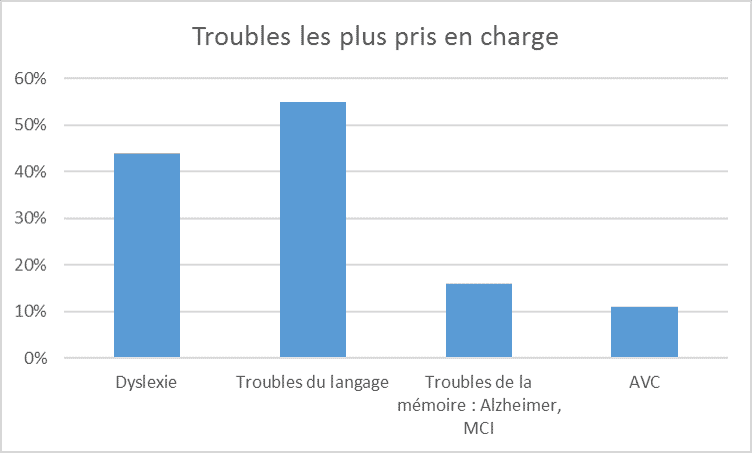
Même si l’AVC n’est qu’à 11%, 33% des orthophonistes l’ont placé en 2ième ou 3ième position.
Voici le détail pour chacune des pathologies concernant la prise en charge, les fonctions cognitives à stimuler et comment le faire.
Prise en charge de la dyslexie
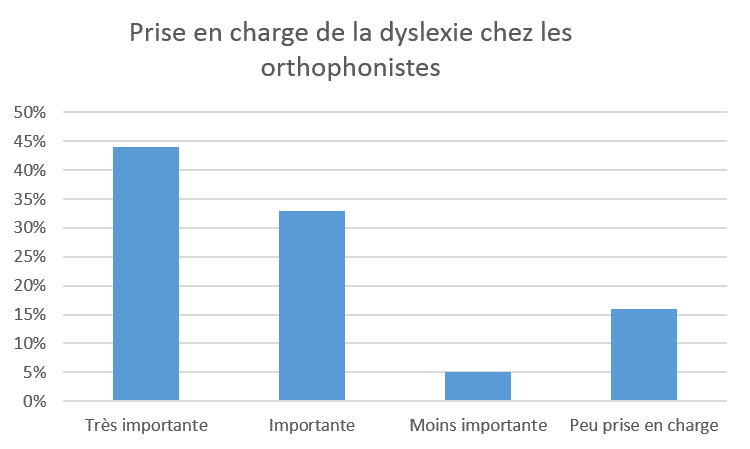
Selon nos orthophonistes, les principales fonctions cognitives à travailler dans le cadre d’une dyslexie sont :
- La mémoire et l’attention, auditives et visuelles,
- Les fonctions exécutives,
- La flexibilité mentale,
- La planification et l’anticipation,
- Les troubles de l’évocation et de la fluence,
- La mémoire des mots, la phonologie,
- le lexique orthographique et la syntaxe.
Les orthophonistes s’accordent à dire que dans le cadre d’une dyslexie, il faut savoir stimuler le désir de vaincre les troubles dans la joie et la bonne humeur.
Les logiciels remontés par les orthophonistes dans le cadre de la dyslexie sont : Attention et mémoire d’Ortho éditions, pratique de la Gestion Mentale de la Garanderie, les échelons Dubois-Buyse.
Prise en charge des troubles du langage
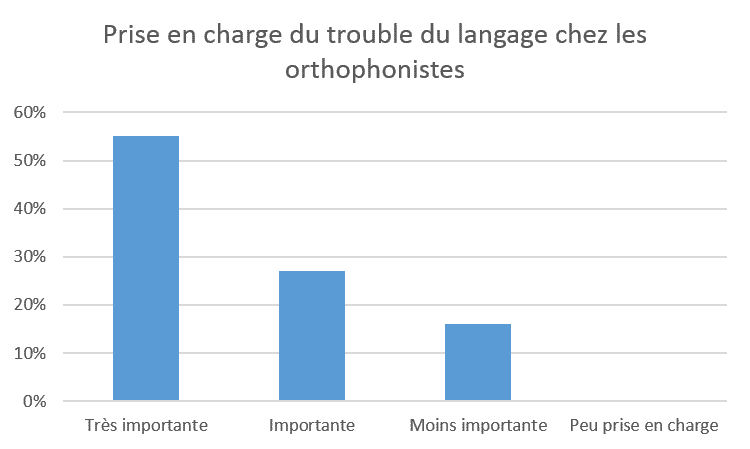
Prise en charge de l’ AVC
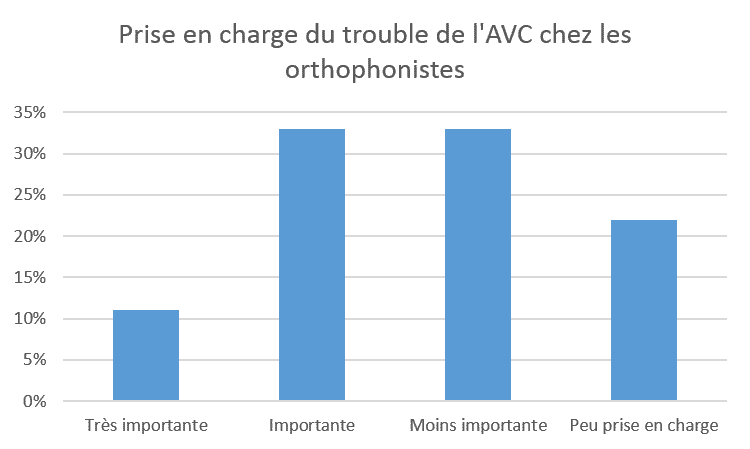
Les fonctions les plus fréquentes à rééduquer post-AVC sont :
- le langage,
- la lecture,
- la transcription,
- la mémoire,
- les fonctions exécutives,
- la syntaxe,
- le lexique,
- le pragmatique,
- la catégorisation
- et l’attention.
Dans une situation post-AVC, voici différentes idées pour rééduquer les fonctions cognitives :
- Faire resurgir des connaissances et compétences verbales,
- Représenter des situations proches du vécu, propres à l’environnement écologique,
- Réaliser des exercices systématiques ainsi que des exercices pratiques,
- Stimuler la mémoire de travail,
- Travailler les dénominations, désignations, appariements et inférences,
- Travailler les tâches organisationnelles en y incluant des intrus.
Prise en charge des troubles de la mémoire
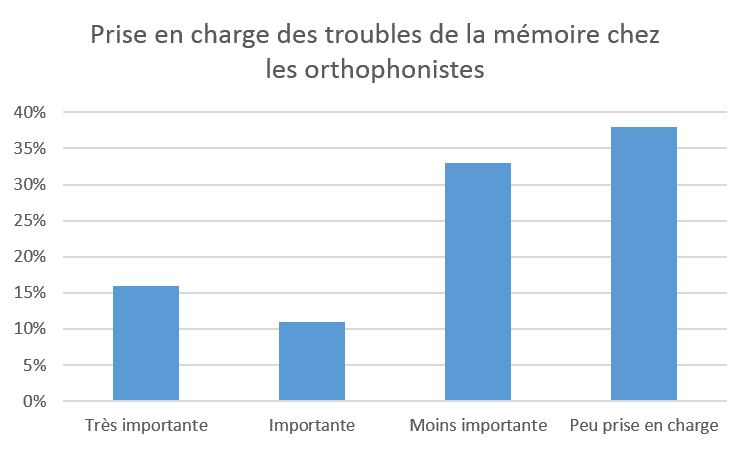
Les principales fonctions cognitives à travailler dans le cadre d’une maladie d’Alzheimer sont :
- La mémoire,
- L’attention,
- La compréhension verbale,
- Les fonctions exécutives,
- Le langage,
- Les praxies.
A la lecture des réponses au sondage, il semble possible dans le cadre d’une maladie d’Alzheimer de maintenir les capacités cognitives du patient, mais il semble difficile de rééduquer les fonctions cognitives.
Des exercices d’attention, de mémorisation, de planification sont à réaliser avec le patient tout en veillant à ne pas l’infantiliser.
Enfin, parmi les conseils que nous avons retenus, citons le fait d’entretenir le désir de communiquer ou encore de compenser le déficit de mémoire à court terme en faisant appel à l’écrit ou l’imagerie mentale.
Quels exercices ou activités conseillez-vous à un patient entre deux séances d’orthophonie ?
Bien que les activités conseillées par les orthophonistes soient adaptées à chaque patient, selon ses compétences et ses troubles, les orthophonistes interviewées nous ont donné de très bonnes idées d’exercices de stimulation cognitive à faire à domicile :
- Les exercices que le patient a déjà faits en séance, qu’il maîtrise afin de s’entraîner,
- La lecture du journal, les mots fléchés, l’apprentissage de courtes poésies, l’écriture de recettes,
- Les mots mêlés , le scrabble , les jeux de société,
- Les jeux des sons.
En tant qu’orthophoniste, quel lien entretenez-vous avec vos patients entre les différentes séances ?
La plupart des orthophonistes n’entretiennent pas de liens avec leurs patients entre les séances. Certains donnent des conseils de prévention et des recommandations ; enfin d’autres entretiennent le lien par quelques emails.
Que pensez-vous de l’utilisation de la tablette comme outil de stimulation cognitive ?
A 50% les orthophonistesestiment que l’utilisation de la tablette en tant qu’outil de stimulation cognitive est une très bonne idée au cabinet, alors que les avis sont plus mitigés quand il s’agit du domicile.
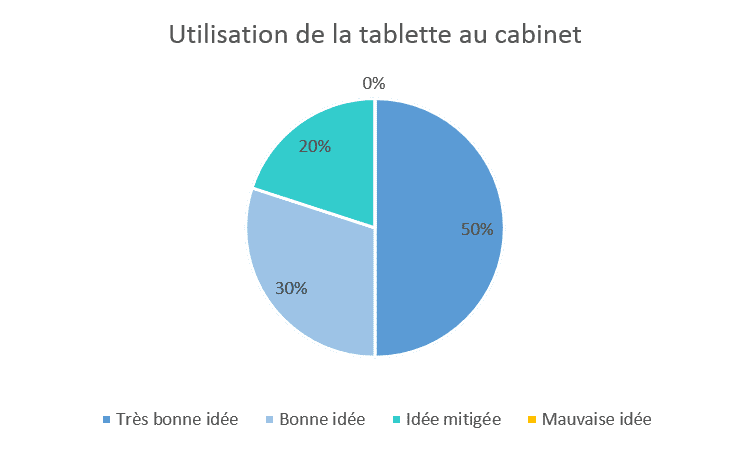
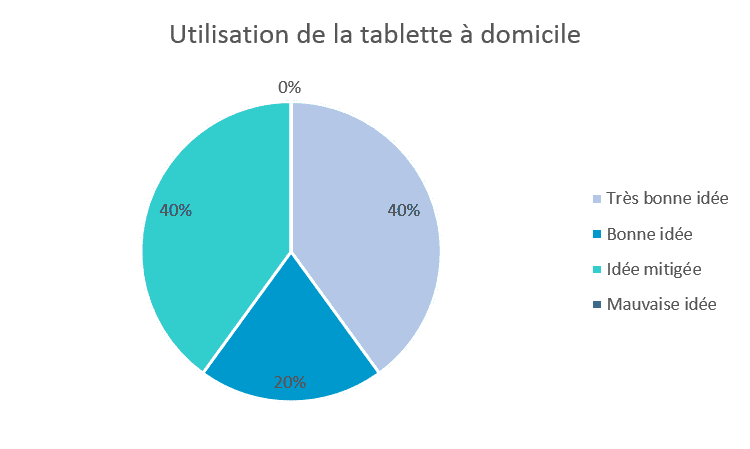
Connaissez-vous des logiciels de stimulation cognitive sur PC / Tablette ?
Les logiciels qui nous ont été cités sont ceux des sociétés Happyneurons, Gerip et DYNSEO.
Les utilisez-vous ?
84 % des orthophonistes utilisent des logiciels de stimulation cognitive sur PC et tablette.
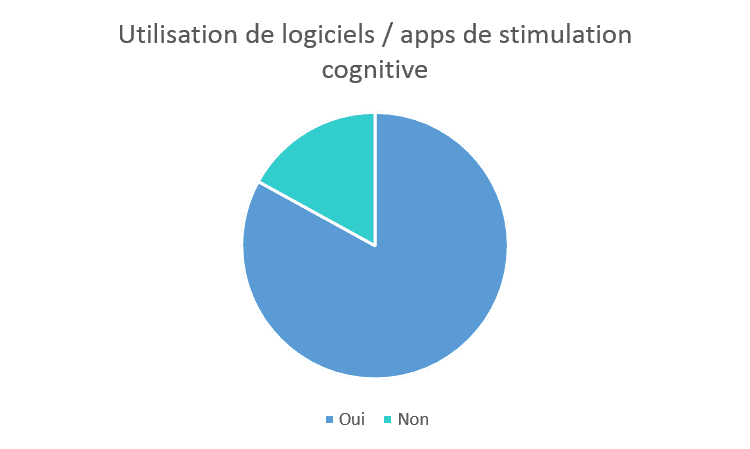
A quelle fréquence ?
20% des orthophonistes interrogés utilisent très souvent un logiciel de stimulation cognitive et 60% parfois.
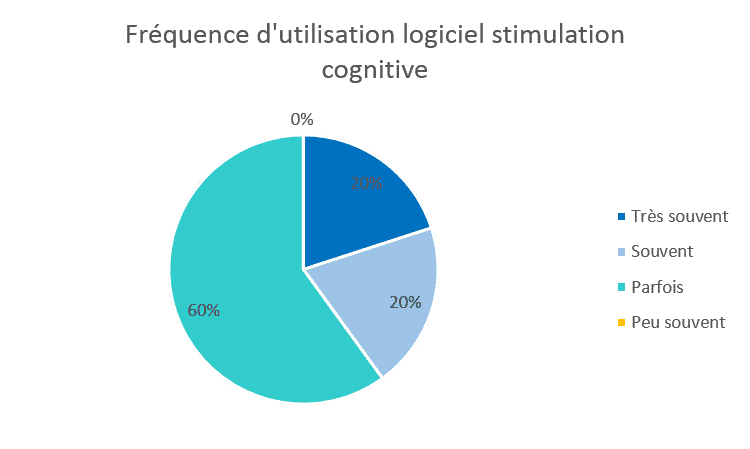
Quels sont les atouts des logiciels de stimulation cognitive dans la pratique de l’orthophonie ?
Voici la liste des atouts et avantages à utiliser de tels logiciels sur tablette :
- L’outil mobile est léger et réactif,
- Il est facile d’utilisation par rapport à un PC : l’absence d’une souris rend le face à face possible,
- Il présente des avantages par rapport au papier : la prise en compte du temps, la création d’exercices dynamiques,
- Les exercices proposés sont variés,
- Il est utilisable lors des interventions au domicile,
- Les exercices peuvent être faits à la maison entre les séances, en complément,
- Le support est très attractif pour certains patients,
- Enfin, l’outil permet une automatisation des compétences par un entraînement régulier, notamment dans le cadre d’une dyslexie.
Quels sont les points faibles à l’utilisation d’un logiciel de stimulation cognitive sur tablette par les orthophonistes ?
Voici les différents points faibles qui nous ont été remontés :
- Les logiciels existants ne permettent pas d’enregistrer des données personnelles et de suivre l’ évolution d’une personne sur les exercices réalisés,
- Les exercices ne sont pas toujours assez modulables et paramétrables.
De plus certains freins à l’utilisation de la tablette doivent être pris en compte, notamment le fait que le tactile puisse être une contrainte, notamment dans le cadre de re-latéralisation de la main lors d’une hémiplégie, ou la fatigue visuelle que cela peut induire.
Utiliseriez-vous un logiciel proposant des jeux de mémoire à domicile à vos patients, qui vous permettrait sur internet de suivre leur assiduité et leur progression ?
50% des orthophonistes utiliseraient peut-être un logiciel pour suivre l’évolution de leurs patients à distance, 10% oui.
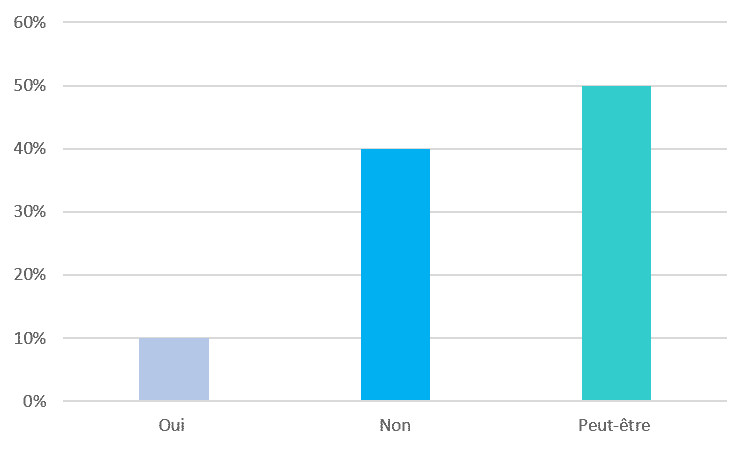
Quel prix en euros seriez-vous prêt à payer pour l’abonnement à un service de ce type (par mois) ?
Les orthophonistes interrogés seraient prêts à payer entre 10 et 20 euros un abonnement mensuel à un logiciel de suivi à distance.
En espérant que les résultats de cette enquête vous aient intéressé, nous remercions vivement tous les orthophonistes qui ont répondu à notre enquête !
Ces produits peuvent aussi vous intéresser :
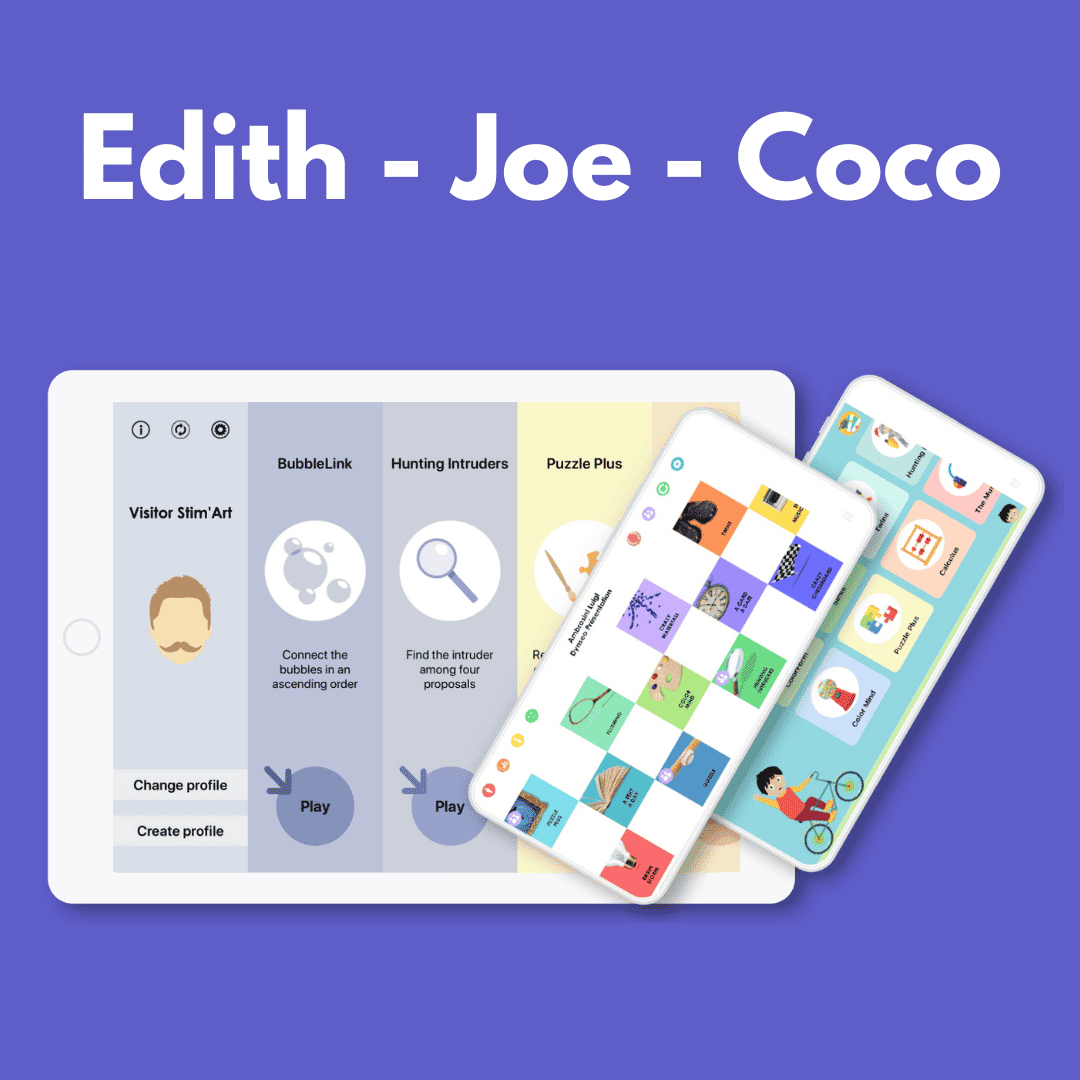
The Dynseo memory game programs, and brain training, fun and cultural. Linked to a web-based monitoring platform, it offers personalized care.
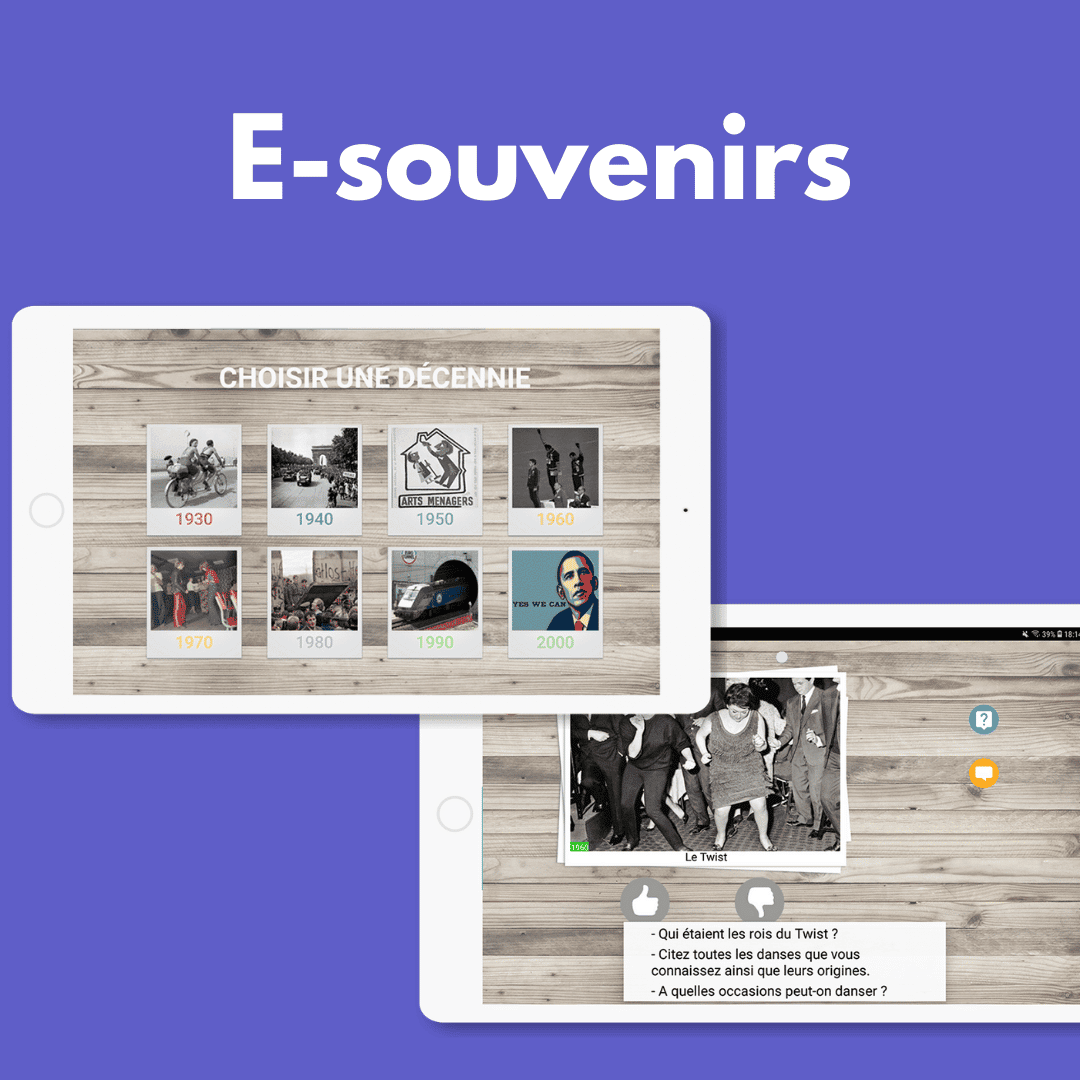
The Rolling Ball is our tablet app that improves fine motor skills. The exercises allow functional rehabilitation of people with movement and coordination disorder (Parkinson’s, dyspraxia…).
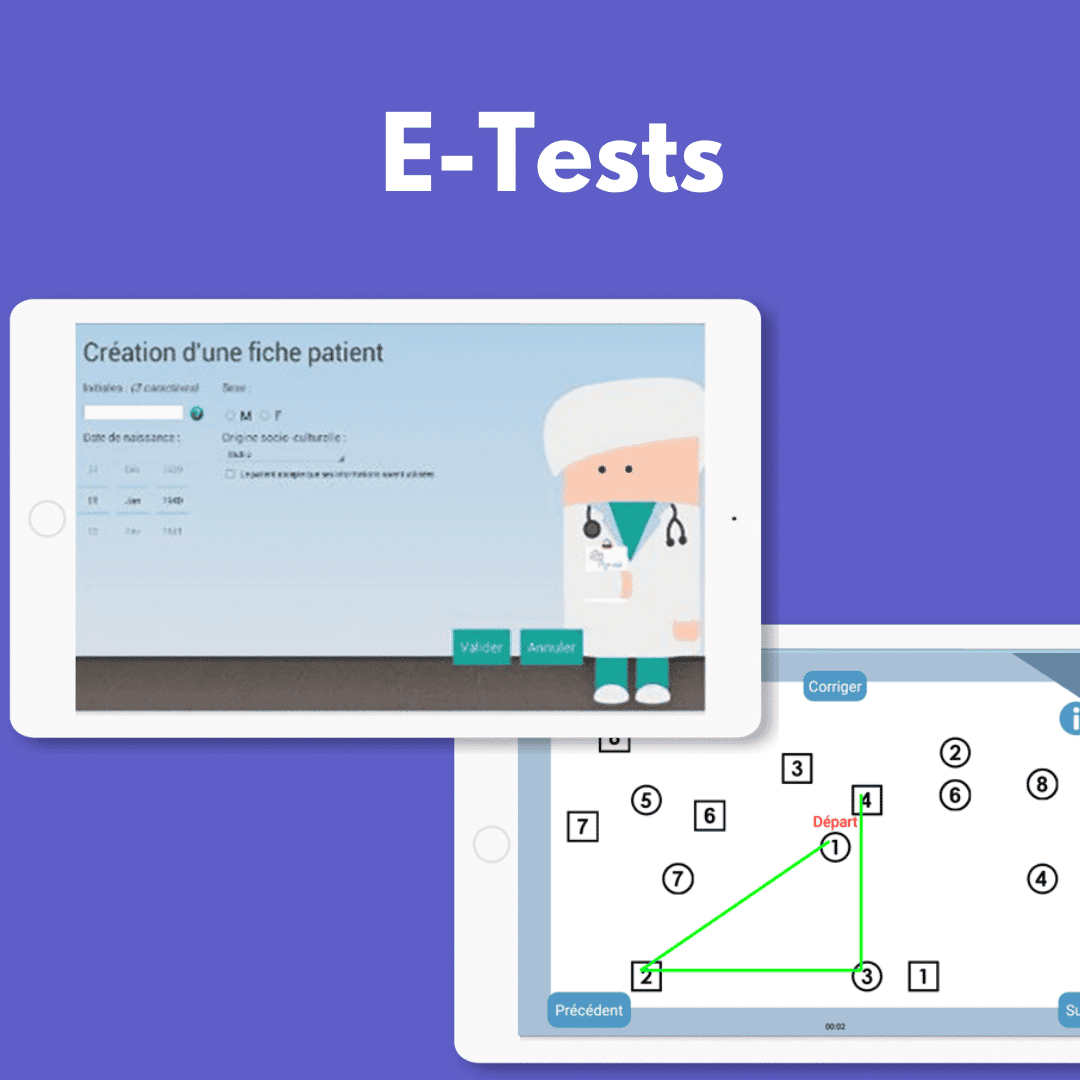
Découvrez dès à présent le MMS GRECO sur tablette !
D’autres articles qui pourraient vous intéresser :
ABA Therapy for Adults with Autism: Effective Treatment
ABA therapy, or Applied Behavior Analysis therapy, is a widely recognized and effective treatment for individuals with...
The Rolling Ball: uses and benefits
The advent of digital media has opened up revolutionary new perspectives in the field of rehabilitation and management...
Supporting adults with autism
Dynseo proposes AUTISM IN ADULTS with CLINT Dynseo and its team are deeply involved in helping people in need, and our...




